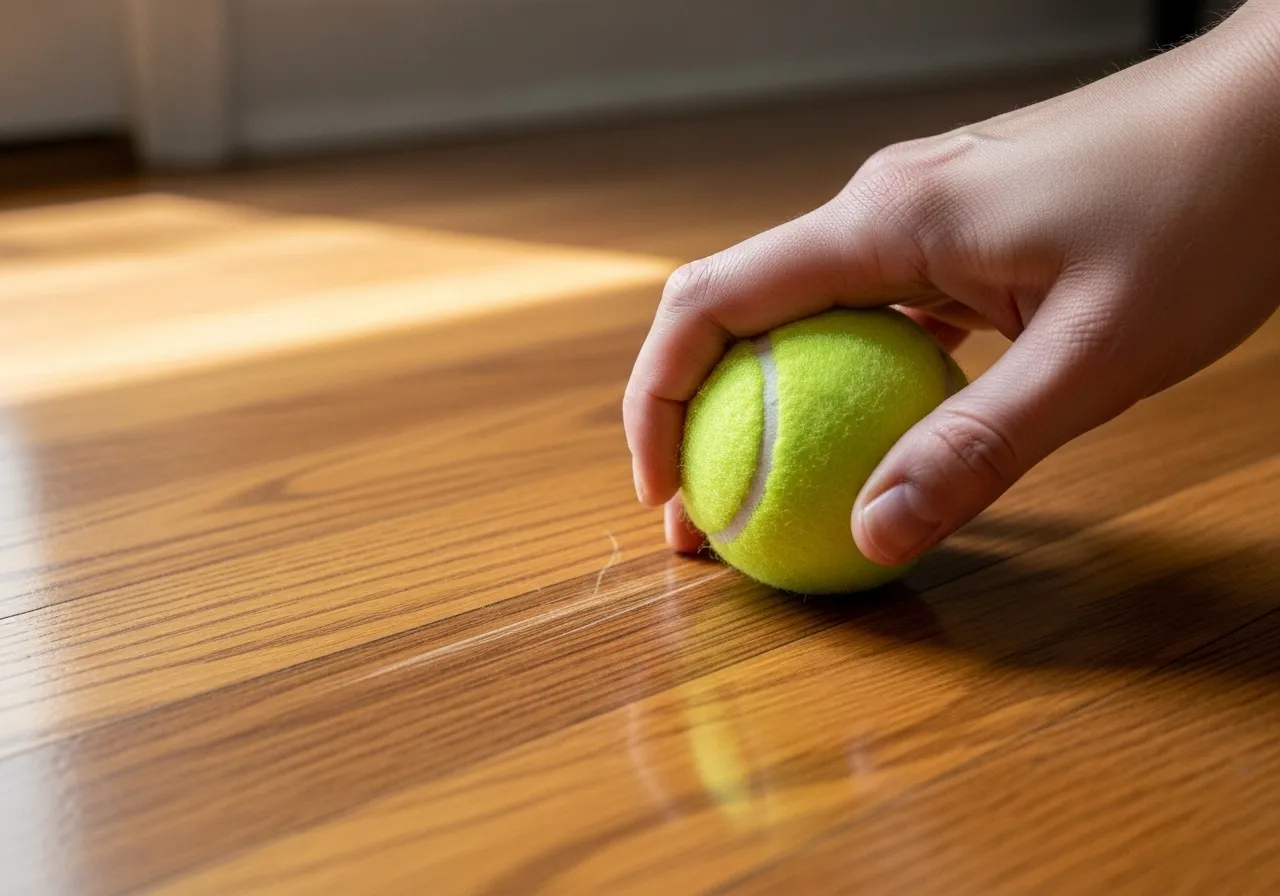
Frequently Asked Questions (FAQs) About Hardwood Floor Care
Even with a solid routine, questions can arise. Here are answers to some of the most common queries about keeping hardwood floors in top shape.
How can I remove scuff marks from my hardwood floor?
Scuff marks from shoes are usually deposits of rubber or plastic on top of the finish, not scratches in it. For light scuffs, one of the easiest tricks is to use a clean tennis ball. Simply rub the tennis ball firmly over the scuff mark, and the friction will often lift it right off. For more stubborn marks, you can try a pencil eraser, but be sure it’s clean so you don’t smudge the floor. If that doesn’t work, apply a drop of your pH-neutral floor cleaner to a soft cloth and gently rub the mark. Always rinse the spot with a water-dampened cloth and dry it thoroughly afterward.
What’s the best way to deal with sticky spots or spills?
For sticky residue from food or drinks, avoid scraping it with anything sharp. Instead, use your regular cleaning solution. Apply a small amount of your diluted pH-neutral cleaner directly to a microfiber cloth, not the floor. Place the damp cloth over the sticky spot and let it sit for a minute or two. This is called “dwell time,” and it allows the cleaner to soften and dissolve the residue. After a couple of minutes, the spot should wipe away easily. Follow up with a cloth dampened with plain water to rinse, and then dry the area completely.
How often should I deep clean or refinish my floors?
It’s important to distinguish between cleaning and refinishing. If you follow a consistent weekly cleaning routine, you should rarely need a heavy “deep clean.” Refinishing is a much larger project. A “screen and recoat,” which involves lightly abrading the top layer of the finish and applying a new one, might be needed every 3 to 5 years in very high-traffic homes to restore the shine. A full refinishing, which sands the floor down to the bare wood, is a major undertaking that is typically only necessary every 10 to 20 years, depending on the amount of wear and tear. If your floor has deep scratches, widespread dullness, or areas where the finish has worn away, it’s best to consult with a professional flooring contractor.
Are steam mops ever safe for hardwood floors?
To be as safe as possible, the answer remains no. We strongly advise against using steam mops on any type of wood flooring. The risk is simply too high. The intense heat and moisture can damage the finish, cause the wood fibers to swell, and lead to long-term problems like cupping or warping. Most flooring manufacturers explicitly state that using a steam cleaner will void the product warranty. A damp microfiber mop is a much safer and still very effective alternative.

















